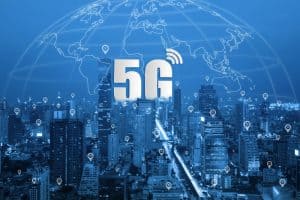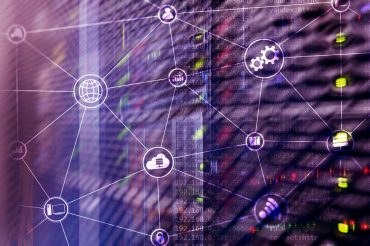
The two leading areas of edge investment are in infrastructure operations and digital services. 5G networks underpin these promising developments.
In an era of ubiquitous computing, advanced data analytics, and digital transformation, local data processing and on-site data centers just won’t cut it anymore. They simply aren’t powerful enough to deliver results with the speed and flexibility required in today’s digital economy. That’s because of the numerous different systems that are difficult to harmonize, but also because they lack the computing capacity for processing data on-site and company-wide, global processing is not possible. This is driving a move to edge computing fueled by the availability of 5G. These are some observations coming out of this year’s Six Five Summit, hosted by Futurum and Moor, which featured leading industry speakers.
The two leading areas of edge investment are in infrastructure operations and in digital services, said Dr. Ralf-Michael Wagner, chief operating officer for cloud applications solutions at Siemens. “They are differentiating their products with something on top, like availability guarantees, which they can charge for or everything as a service,” he relates. “‘Asset as a service’ is now also gaining quite some momentum that they differentiate, not only with what they sell is a product or a service, but it’s something on top of it. It’s changing their business model.”
Underpinning these promising developments is 5G networks, according to Raj Singh, executive vice president of processors at Marvell. While powerful, the leapfrog in performance from 5G requires innovation across the entire network, including architecture, hardware platforms, and software stacks, he explained.
Download Now: Digital Twins Solutions BriefThe need for underlying digital and technology transformation has become urgent. While the Internet of Things and edge have been under development for a number of years at Siemens, the Covid-19 crisis of 2020 propelled adoption far ahead of original projections, Wagner states. “We’ve been reading about IT and OT convergence for many years, and now the technology that comes with that is affordable,” he says. “When we first connected industrial assets with IoT, we brought a gateway into the shop floor. But it was only a gateway pumping some data into the cloud, and customers were asking for industrial PCs to run and pre-process data.”
The applications for converged IT and OT extend well beyond the shop floor. At an upcoming expo, Siemens is demonstrating a set of interconnected use cases “from water Irrigation, Lightning Management, from Crowd Management, linking this to Public Transportation, linking to everything. It’s like a small city with everything, and every aspect that you can think of is covered with applications. Basically, IoT is kind of a building between all these kinds of apps and use cases and the data and the assets.”
The 5G networks making this connected “city” possible are seeing many levels of deployments. “5G is not something that is just for devices or handsets or tablets or cell phones,” said Singh. “It’s much more than that; it has industrial components. It’ll power smart cities and smart grids and vehicular traffic and communication in augmented reality, in gaming, in remote medicine. These are all very key components of a low latency, always-on, very high-speed network. That’s what 5G is, and has great promise to literally change the effect of society in the future.”
In many ways, 5G offers an alternative to the cloud. “It became evident that as the more data we started to collect from industrial devices and build solutions on top of them, that not everything has to be transmitted through the cloud,” said Wagner. “In some cases, it creates costs, which you want to avoid. So maybe you want to keep data locally, transact locally, or analyze locally. Only the results of that analytics need to go to the cloud for the longer term.” For example, he illustrates, high-frequency data from preparation, which is a quite heavy use case in the industrial space, should be analyzed on-premises. Because you don’t want to have 20 Kilohertz sampling rates stream from a model which might fail in three months from now, or we want to end up streaming that into the cloud all the time.”







